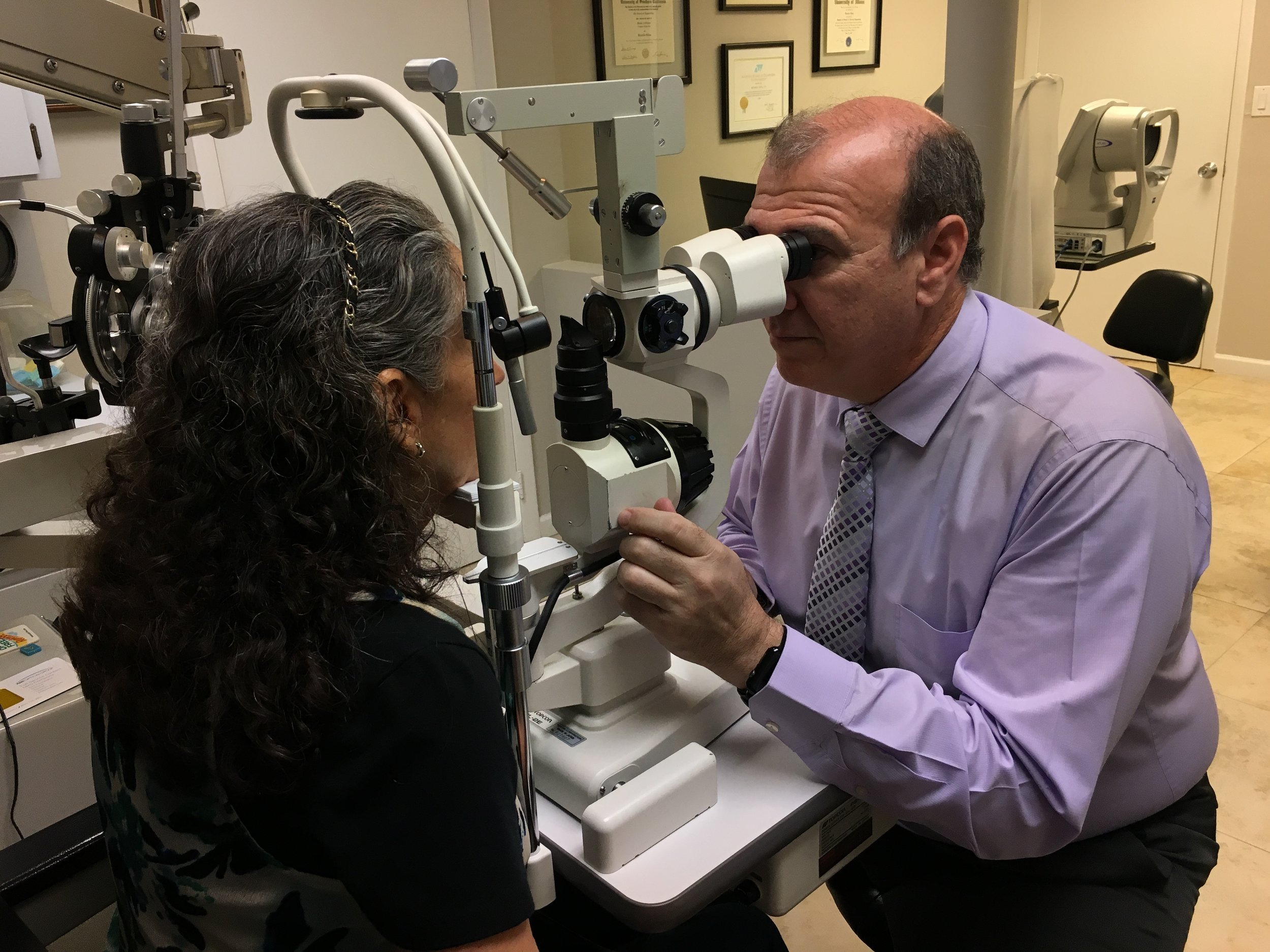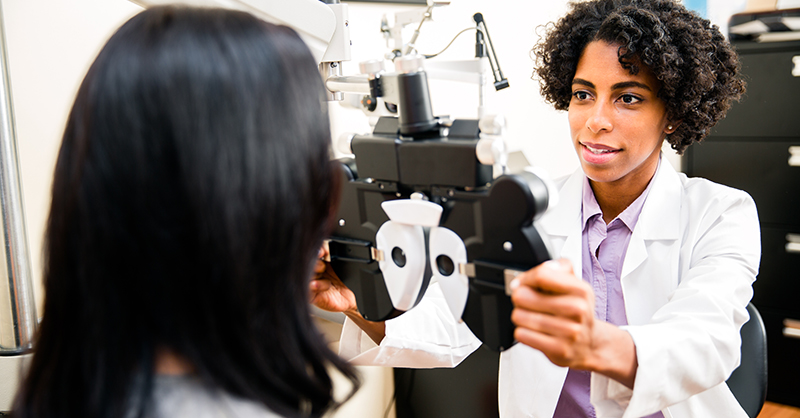The Relevance of Regular Examinations with an Eye Doctor Optometrist
The Relevance of Regular Examinations with an Eye Doctor Optometrist
Blog Article
Exploring the current Technical Improvements in Optometry and What They Mean for Eye Doctors
In the ever-evolving field of optometry, recent technological innovations are reshaping how practitioners approach eye care. From the precision of Optical Comprehensibility Tomography to the nuanced understandings supplied by AI-driven analysis tools, these developments are setting brand-new criteria in client assessment and therapy. Teleoptometry is poised to redefine ease of access, ensuring that experience transcends geographical limitations. As these developments penetrate the technique, optometrists are encountered with the obstacle of welcoming these tools to improve individual outcomes. Yet, the inquiry remains: how will these technological changes redefine the functions and duties within the occupation?
Innovations in Diagnostic Devices
Advancing the field of optometry, innovations in analysis devices have actually transformed the way eye care experts examine and diagnose ocular conditions and aesthetic problems. The previous years has actually witnessed significant technological innovations, allowing more precise and extensive examinations.
Another secret advancement is the intro of advanced corneal topography systems, which map the surface curvature of the cornea with precision. These devices are specifically useful for fitting call lenses and detecting corneal disorders. Furthermore, digital retinal imaging has changed typical ophthalmoscopy, providing detailed, scenic sights of the retina that assist in comprehensive visual assessments.
The advancement of wavefront aberrometry has actually also been vital, enabling the evaluation of refractive errors with unparalleled accuracy (Opticore Optometry). This technology helps in customizing rehabilitative lenses and boosting medical results for refractive surgical treatments. Jointly, these analysis innovations empower optometrists to provide exceptional patient treatment, making sure early intervention and customized therapy techniques, inevitably enhancing visual health and wellness results
AI in Individual Management
Building on the structure of innovative analysis tools, the unification of fabricated intelligence (AI) in individual administration stands for a transformative jump for optometry. AI systems are increasingly employed to improve performance, precision, and customization in client treatment.
Moreover, AI-driven systems help with structured client communications and administrative procedures. Automated scheduling, digital appointments, and individualized follow-up strategies not just boost individual fulfillment however likewise enhance time administration for professionals. These systems can triage patients based on the seriousness of their conditions, guaranteeing that those in important need obtain prompt attention.
Additionally, AI boosts decision-making by supplying optometrists with evidence-based suggestions and therapy pathways. By integrating data from electronic health and wellness records, AI devices provide insights that educate scientific decisions, minimizing the risk of mistakes and enhancing individual end results. As AI remains to advance, its duty in patient monitoring will likely increase, improving the landscape of optometric care.
Advances in Retinal Imaging
In the realm of optometry, retinal imaging has actually experienced impressive technological improvements that are enhancing diagnostic capabilities and individual care. Innovations such as Optical Coherence Tomography (OCT) and fundus photography have reinvented how optometrists envision and analyze the retina. OCT, in particular, offers high-resolution, cross-sectional photos of the retina, enabling the in-depth exam of its layers. This capacity is important for early detection and administration of conditions like glaucoma, diabetic person retinopathy, and age-related macular deterioration.
Boosted imaging methods like OCT angiography are further refining diagnostic accuracy. Optometrist Chino. Such advancements assist in the recognition of minute view it now retinal modifications that could represent disease progression.
Furthermore, innovations in man-made intelligence are boosting retinal imaging by enabling computerized analysis of huge datasets. These systems assist optometrists in determining patterns indicative of pathology, consequently enhancing diagnostic precision and effectiveness. Collectively, these developments are changing retinal imaging right into a foundation of modern-day eye care, improving end results and increasing therapeutic opportunities.
Teleoptometry's Expanding Duty
Teleoptometry is significantly coming to be a vital component of eye care, driven by innovations in data and analysis tools. As optometry embraces electronic change, teleoptometry promotes remote consultations, enabling eye doctors to expand their services past typical borders. This is specifically beneficial in rural and underserved locations where accessibility to specialized eye care is often limited. By leveraging high-resolution video conferencing and progressed retinal imaging, eye doctors can perform extensive eye tests from afar, guaranteeing prompt diagnosis and therapy.
The assimilation of expert system (AI) additional boosts teleoptometry, making it possible for the evaluation of visual data and helping in the detection of ocular conditions such as glaucoma and diabetic retinopathy. AI-powered algorithms can swiftly interpret complex imaging information, offering optometrists with useful understandings that bolster scientific decision-making.
Moreover, teleoptometry supports connection of care via smooth integration with electronic health documents (EHRs), enabling eye doctors to keep detailed client backgrounds. When seeking advice from with different experts., this guarantees that patients get tailored and constant care even.
Regardless of these advantages, difficulties remain, including making sure information protection and managing client assumptions. Teleoptometry stands for a significant stride in the direction of even more easily accessible, reliable, and patient-centered eye care. As innovation develops, its duty is positioned to increase even more.

Future Patterns in Eye Care
A myriad of cutting-edge fads is set to reshape the future of eye care, driven by technological developments and the progressing needs of individuals. One significant pattern is the assimilation of fabricated intelligence (AI) in diagnostics, which guarantees to boost here the precision and performance of eye assessments. AI algorithms can analyze huge quantities of data from retinal images, possibly spotting conditions like diabetic person retinopathy and glaucoma earlier than typical methods.
Additionally, individualized medicine is acquiring grip in optometry, with hereditary screening notifying tailored treatment strategies. This technique intends to maximize patient outcomes by customizing interventions to individual hereditary accounts. Wearable technology, such as smart contact lenses, is likewise imminent, offering real-time monitoring of intraocular stress or glucose degrees, hence supplying continual understandings into systemic and eye health and wellness.
The fostering of augmented fact (AR) and virtual fact (VIRTUAL REALITY) in training and client education and learning is one more emerging trend. These modern technologies provide immersive experiences that can enhance understanding and skills both for eye doctors and clients. As these fads progress, optometrists must remain abreast of technological improvements to give sophisticated treatment, ensuring better client results and contentment in the vibrant landscape of eye treatment.
Verdict

Jointly, these diagnostic improvements encourage eye click here to find out more doctors to supply superior client treatment, making sure early treatment and tailored treatment approaches, ultimately enhancing aesthetic health end results.

As these innovations proceed to evolve, optometrists should adapt and incorporate them right into technique, inevitably optimizing process efficiency and raising the requirement of eye care supplied to people.
Report this page